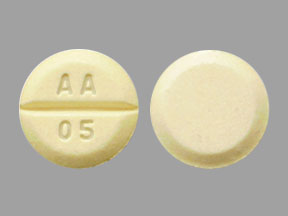Phytonadione Side Effects
Medically reviewed by Drugs.com. Last updated on Aug 22, 2024.
Applies to phytonadione: oral capsule, oral tablet.
Other dosage forms:
Serious side effects of phytonadione
Along with its needed effects, phytonadione may cause some unwanted effects. Although not all of these side effects may occur, if they do occur they may need medical attention.
Check with your doctor immediately if any of the following side effects occur while taking phytonadione:
Incidence not known
- bluish color of the fingernails, lips, skin, palms, or nail beds
- blurred vision
- chest tightness
- confusion
- cough
- difficulty swallowing
- dizziness, faintness, or lightheadedness when getting up suddenly from a lying or sitting position
- fast heartbeat
- hives, itching, skin rash
- puffiness or swelling of the eyelids or around the eyes, face, lips, or tongue
- rapid and weak pulse
- sweating
- trouble breathing
- unusual tiredness or weakness
- yellow eyes or skin
Other side effects of phytonadione
Some side effects of phytonadione may occur that usually do not need medical attention. These side effects may go away during treatment as your body adjusts to the medicine. Also, your health care professional may be able to tell you about ways to prevent or reduce some of these side effects.
Check with your health care professional if any of the following side effects continue or are bothersome or if you have any questions about them:
Incidence not known
- change in taste
- feeling of warmth
- redness of the face, neck, arms and occasionally, upper chest
For healthcare professionals
Applies to phytonadione: compounding powder, injectable solution, oral tablet.
General
The most common adverse events were dermatologic and injection site reactions.[Ref]
Cardiovascular
- Rare (less than 0.1%): Rapid and weak pulse, hypotension, cyanosis
- Very rare (less than 0.01%): Facial flushing
- Postmarketing reports: Tachycardia, flushing[Ref]
Hypersensitivity
- Very rare (less than 0.01%): Anaphylactoid reactions (IV route)
- Frequency not reported: Allergic sensitivity, anaphylaxis
- Postmarketing reports: Fatal hypersensitivity reaction[Ref]
Fatalities and other severe reactions have occurred during or immediately after the parenteral administration of phytonadione. The majority of these reactions have occurred with intravenous administration. These reactions resemble hypersensitivity or anaphylaxis and include shock and cardiac or respiratory arrest. Feelings of uneasiness, flushing, diaphoresis, chest pain, tachycardia, cyanosis, weakness, and dyspnea may precede the cardiopulmonary event. These severe reactions are more likely with, but are not limited to, rapid infusions of undiluted drug.[Ref]
Gastrointestinal
Gastrointestinal side effects have rarely included 'peculiar' sensations of taste.
Respiratory
- Rare (less than 0.1%): Dyspnea[Ref]
Other
- Frequency not reported: Death (IV and IM routes)[Ref]
Dermatologic
- Uncommon (0.1% to 1%): Erythematous, indurated, pruritic plaques
- Rare (less than 0.1%): Profuse sweating, scleroderma-like lesions,
- Very rare (less than 0.01%): Sweating
- Frequency not reported: Erythema perstans-like lesions[Ref]
Nervous system
- Rare (less than 0.1%): Dizziness
- Very rare (less than 0.01%): Unusual taste
- Postmarketing reports: Dysgeusia[Ref]
Hepatic
- Rare (less than 0.1%): Hyperbilirubinemia
- Frequency not reported: Jaundice in newborns[Ref]
Hyperbilirubinemia occurred primarily with doses above those recommended.[Ref]
Hematologic
- Frequency not reported: Hemolysis in newborns[Ref]
Local
- Rare (less than 0.1%): Injection site reactions (inflammation, atrophy, necrosis)
- Very rare (less than 0.01%): Venous irritation or phlebitis (IV route)
- Frequency not reported: Pain, swelling, and tenderness at the injection site[Ref]
References
1. (2022) "Product Information. Vitamin K (phytonadione)." Apothecon Inc
2. Cerner Multum, Inc. "UK Summary of Product Characteristics."
3. Cerner Multum, Inc. "Australian Product Information."
4. (2001) "Product Information. Mephyton (phytonadione)." Merck & Co., Inc
More about phytonadione
- Check interactions
- Compare alternatives
- Pricing & coupons
- Reviews (3)
- Drug images
- Latest FDA alerts (1)
- Dosage information
- During pregnancy
- Drug class: anticoagulant reversal agents
- Breastfeeding
- En español
Patient resources
- Phytonadione oral/injection drug information
- Phytonadione (Injection) (Advanced Reading)
- Phytonadione (Oral) (Advanced Reading)
- Phytonadione Tablets
- Phytonadione Injection
Other brands
Professional resources
Other brands
Vitamin K1, Aquamephyton, Mephyton
Related treatment guides
Further information
Phytonadione side effects can vary depending on the individual. Always consult your healthcare provider to ensure the information displayed on this page applies to your personal circumstances.
Some side effects may not be reported. You may report them to the FDA.

